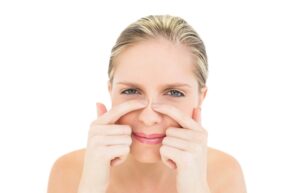Microdermabrasion is a technique practiced for fifteen years by dermatologists and beauticians to renew the upper layers of the epidermis. It is an exfoliating treatment that deeply cleanses the epidermis by eliminating dead cells and impurities, using a device that projects aluminum oxide microcrystals at high speed and sucks them together to skin debris. The principle is similar to the jets of sand that clean the facade of a building. This technique, which can be compared to superficial “sandblasting” of the skin, is possible on the face, hands, décolleté, but also on the body in order to reduce stretch marks.
Microdermabrasion reduces acne scars, dilated pores, dark spots, and helps repair the harmful effects of exposure to ultraviolet rays. In addition, it stimulates cell renewal and even increases the formation of collagen (fibrous glycoprotein that provides tone and elasticity to the skin).
The purpose of exfoliation
Exfoliation is essential to keep skin soft and make room for cell renewal.
The first layers of the cutaneous plan are made up of the epidermis and a layer of dead cells which have a protective role against external aggressions (wind, cold, pollution, sun). These cells are gradually renewed. With aging, these cells accumulate and compact, causing visible imperfections. If they are led to believe that there is sufficient cell thickness, these same cells therefore stop producing new cells. The elimination of dead cells therefore restarts this phenomenon of renewal in addition to improving the appearance of the cutaneous surface.
The purpose of exfoliation is therefore to help our skin eliminate dead cells, as well as comedones and milia (whiteheads). Thus rid of these impurities, the skin is softer, seems more uniform; complexion brightens, the appearance of fine lines and wrinkles fades, and skin renews itself faster. It is also more receptive to any other care that is applied following this treatment.
For who?
Microdermabrasion treatments have very few side effects. On the other hand, you may feel tingling when applying our beauty products and have the impression of having suffered a slight erythema due to the sun or the wind. The skin is sometimes a little red after the session and for about half an hour.
This sensation is explained by the fact that the layer which naturally protects the surface of the skin (the hydro lipid layer) was removed during the treatment and will regenerate within 48 hours. Desquamation of the treated area may occur during the 3rd and 4th days following the treatments.
Following a treatment, it is imperative to wear a sunscreen with an SPF between 15 and 30. Sun protection is the essential post-treatment care. In addition, do not expose yourself to the sun during the week following the microdermabrasion treatment. You should also wait three weeks after treatment before using any retinol A, AHA, glycolic acid, or essential oil products again.
Products applied after microdermabrasion must have a balanced pH – between 4 and 7 – in order to avoid any irritation. You will also need to drink 8 to 12 glasses of water a day to help keep your skin hydrated. Finally, use moisturizing products, adapted to your skin type.
Home microdermabrasion
In pharmacies, there are generally two types of microdermabrasion treatments that are inspired by the professional care offered in institutes. In the first case, it is a mechanical process that consists of exfoliating the epidermis using granules that will give the impression of sandblasting. The second type of treatment consists of peels based on alpha hydroxy acids, better known as AHAs.
You should know that these commercial products deeply cleanse the skin and revive the radiance of the complexion, but expectations should be realistic. With home microdermabrasion, it is more difficult to reduce fine lines and scars. It is important to read and follow the instructions to the letter, in order not to weaken the skin. Home microdermabrasion brings benefits when using a quality product: without however replacing the version offered in an institute.



